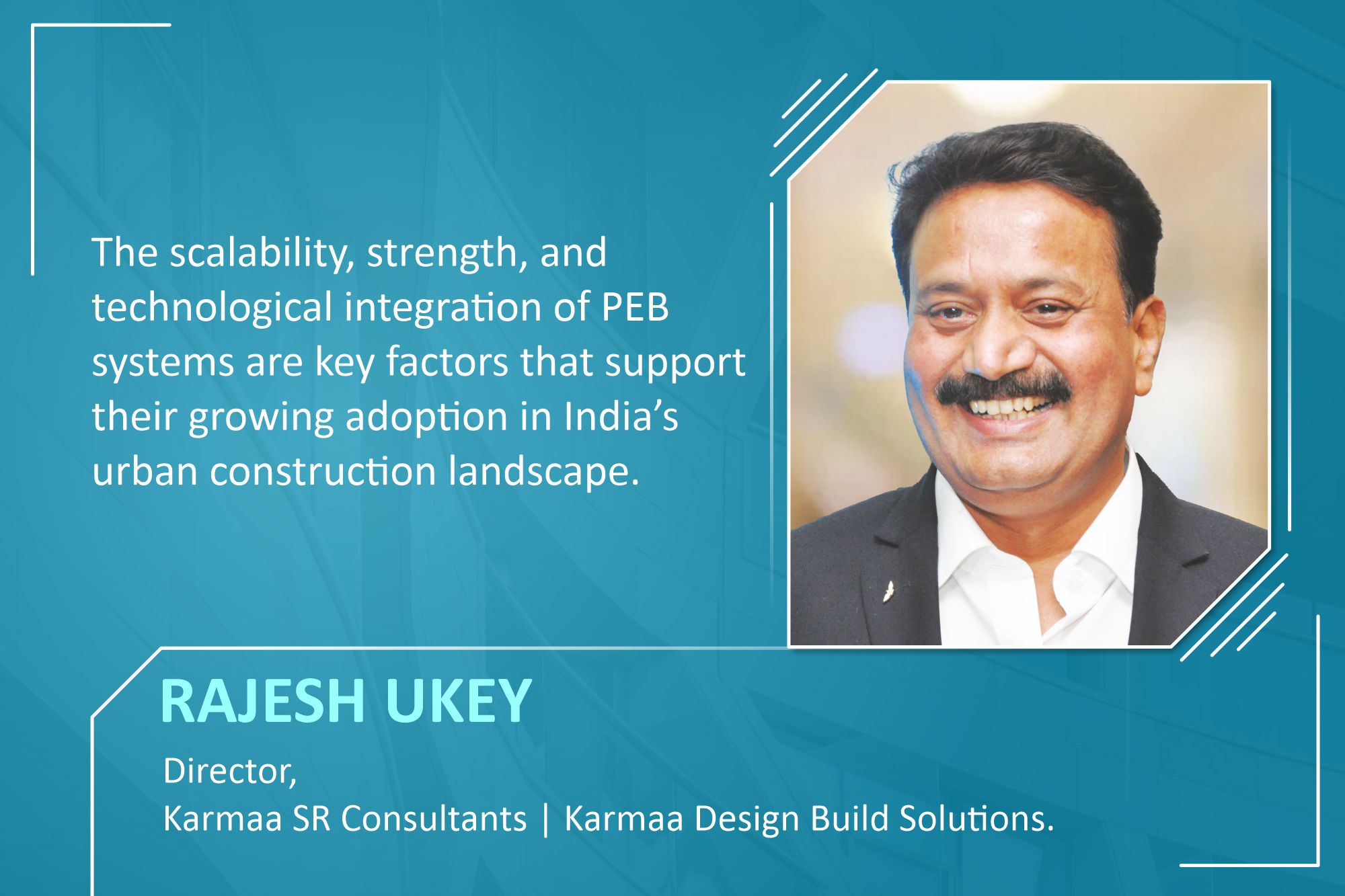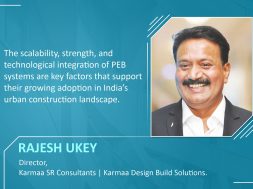PEB minimises material wastage in construction

This interaction delves into the factors to consider while using PEB technology, the associated challenges, and why it is a superior choice for high-rise construction.
What, in your opinion, is making PEB buildings a superior choice for high-rise structures?
PEB buildings offer a combination of speed, cost-efficiency, flexibility, and durability, making them an increasingly superior choice for high-rise structures in India. As the construction industry in India continues to evolve, focusing on faster project delivery, compliance with safety and environmental standards, and the need for modern, sustainable infrastructure, PEB systems are becoming a highly viable option for high-rise buildings in commercial, residential, and industrial sectors.
What are the important factors to be considered while using PEB technology in high-rise construction?
Incorporating PEB technology into high-rise construction requires careful consideration of structural design, material selection, compliance with local codes, and efficient construction practices. By addressing these factors, developers can leverage PEB systems’ speed, cost-effectiveness, and sustainability benefits while ensuring that the high-rise structure meets all safety, performance, and regulatory requirements.
What are the economic advantages of using PEB solutions for high-rise buildings?
PEB systems use steel with precise engineering, which minimises material wastage. Labour costs are significantly reduced in PEB constructions since the manual work required for on-site construction is comparatively less. PEB structures are lighter than traditional concrete or masonry buildings, reducing the foundation’s load. This leads to savings on foundation costs, particularly significant in high-rise buildings. PEB structures are more durable and require less maintenance over time than traditional materials, reducing long-term costs.
Transportation is a cost-initiating factor in PEB structures. How do you think this challenge can be overcome, especially when a large quantity of construction material is to be transported to the construction sites in high-rise buildings?
Although transportation costs can be high for high-rise projects where large quantities of construction materials need to be moved to construction sites, some strategies can help mitigate these transportation challenges. By optimising logistics, localising manufacturing, modularising components, and employing advanced planning techniques, transportation costs for PEB structures in high-rise construction can be significantly reduced. Using efficient transport providers, phased delivery, and leveraging alternate transport modes like rail or water can improve cost-effectiveness. Careful coordination between all stakeholders—manufacturers, transporters, and construction teams—is key to ensuring that PEB technology remains a viable and economical solution for high-rise buildings.
Could you please elaborate on the benefits offered by PEB technology in terms of design and sustainability (people, planet, and profit) in respect to high-rise buildings?
These advantages can be viewed through the lens of sustainability’s “Triple Bottom Line” : People (social impact), Planet (environmental impact), and Profit (economic impact).
PEB technology offers numerous benefits in design and sustainability for high-rise buildings. Its precision-engineered components allow for flexible design, faster construction, and reduced costs, making it an attractive option for developers. From a sustainability perspective, PEB systems support environmental goals through energy efficiency, recyclability, and lower resource consumption while offering social benefits like safer working conditions and more resilient buildings. Moreover, its economic benefits, including lower construction costs, faster ROI, and long-term operational savings, ensure that PEB technology aligns with the principles of people, planet, and profit in a balanced, sustainable approach to high-rise construction.
What challenges are associated with employing PEB technology to ensure sustainability in various climatic conditions?
Solutions such as advanced insulation, passive design strategies, energy-efficient systems, and compliance with local building codes are essential for maximising the sustainability of PEB buildings across diverse environments. In regions with high temperatures, PEB structures may face issues with heat gain since steel has high thermal conductivity. However, in colder regions, steel structures can transfer cold temperatures inside the building, making it difficult to maintain comfortable indoor environments without high energy consumption for heating. Condensation on steel components can also pose a risk of corrosion over time.
For more details, visit: https://karmaadesignbuildsolutions.com/
Cookie Consent
We use cookies to personalize your experience. By continuing to visit this website you agree to our Terms & Conditions, Privacy Policy and Cookie Policy.









